South India Backpacking Dec. 2018-Jan. 2019
Tamil Nadu State: Thanjavur’s Brihadishwara Temple and Royal Palace
19 January Thanjavur (Tanjore)
I headed over to the Madurai railway station and got a second-class
unreserved seat for the short ride to Thanjavur. These cars are at the end of
the train—a long hike from the station entrance—and had small mobs of hopeful
passengers trying to get aboard as departing passengers struggled to get off. I
barely got on and had to stand for the entire journey, though just 45 minutes.
On arrival I went over to the Kasi Inn and got a room, then did the usual
resting and writing.
20 January Thanjavur (Tanjore)
The Chola empire
lasted an incredibly long period from the 300s B.C. to 1279 A.D. and reached as
far as present-day Malaysia, Thailand, and Indonesia. Here at one of their
capitals, Raja Raja Chola I built the magnificent Brihadishwara Temple to Shiva
between 1003 and 1010 of ochre-hued granite. I entered through a series of later
gateways to the enormous courtyard with the Nandi mandapa, assembly hall, and
the great tower. Statues of Shiva, other deities, guardians, and dancers
decorate the lower levels of the tower. Smaller shrines and cloisters encircle
the main temple and have much artwork too. I returned in the evening to
experience the temple lit up at night.
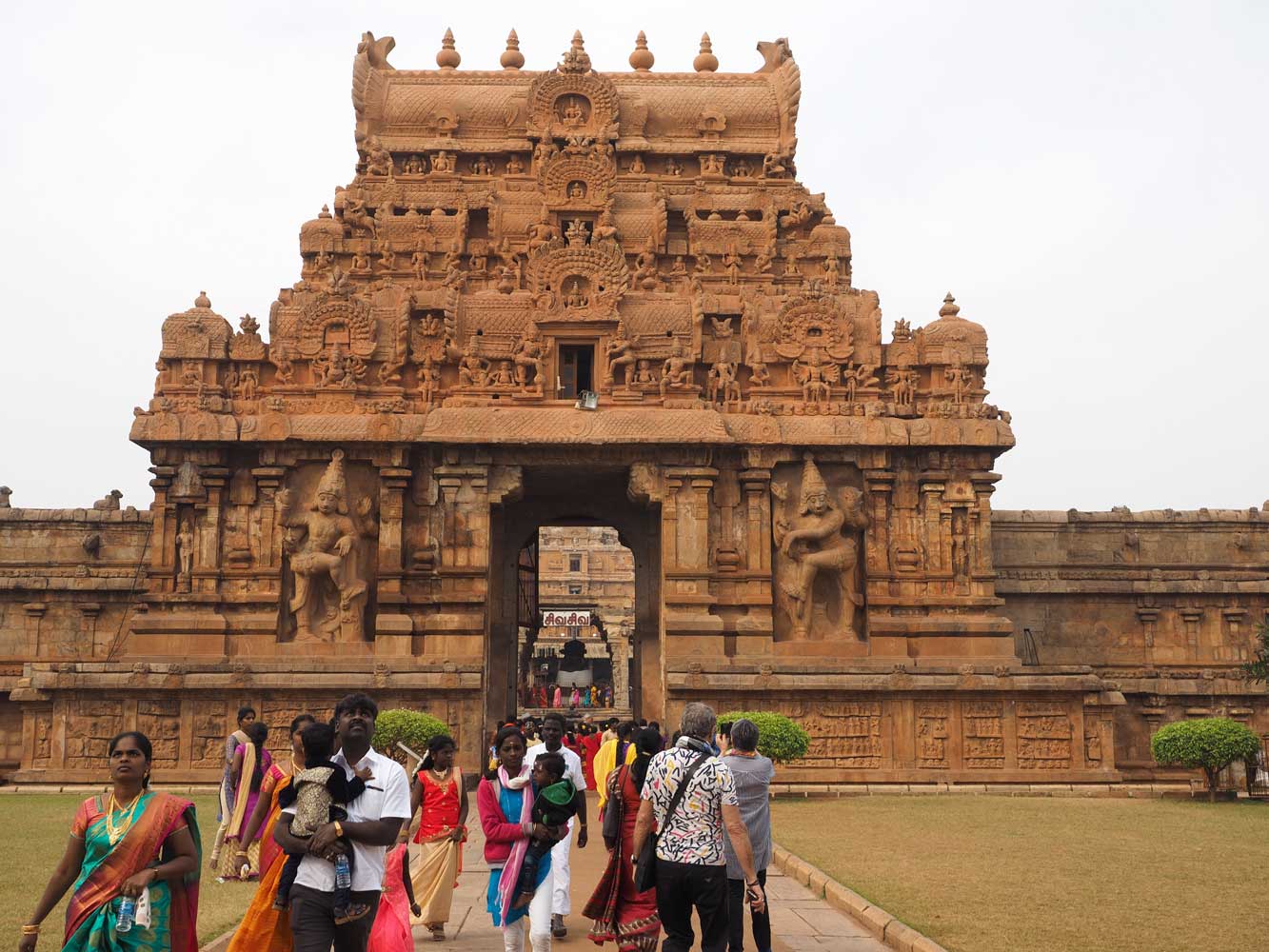
Multiple gateways
lead to the temple.
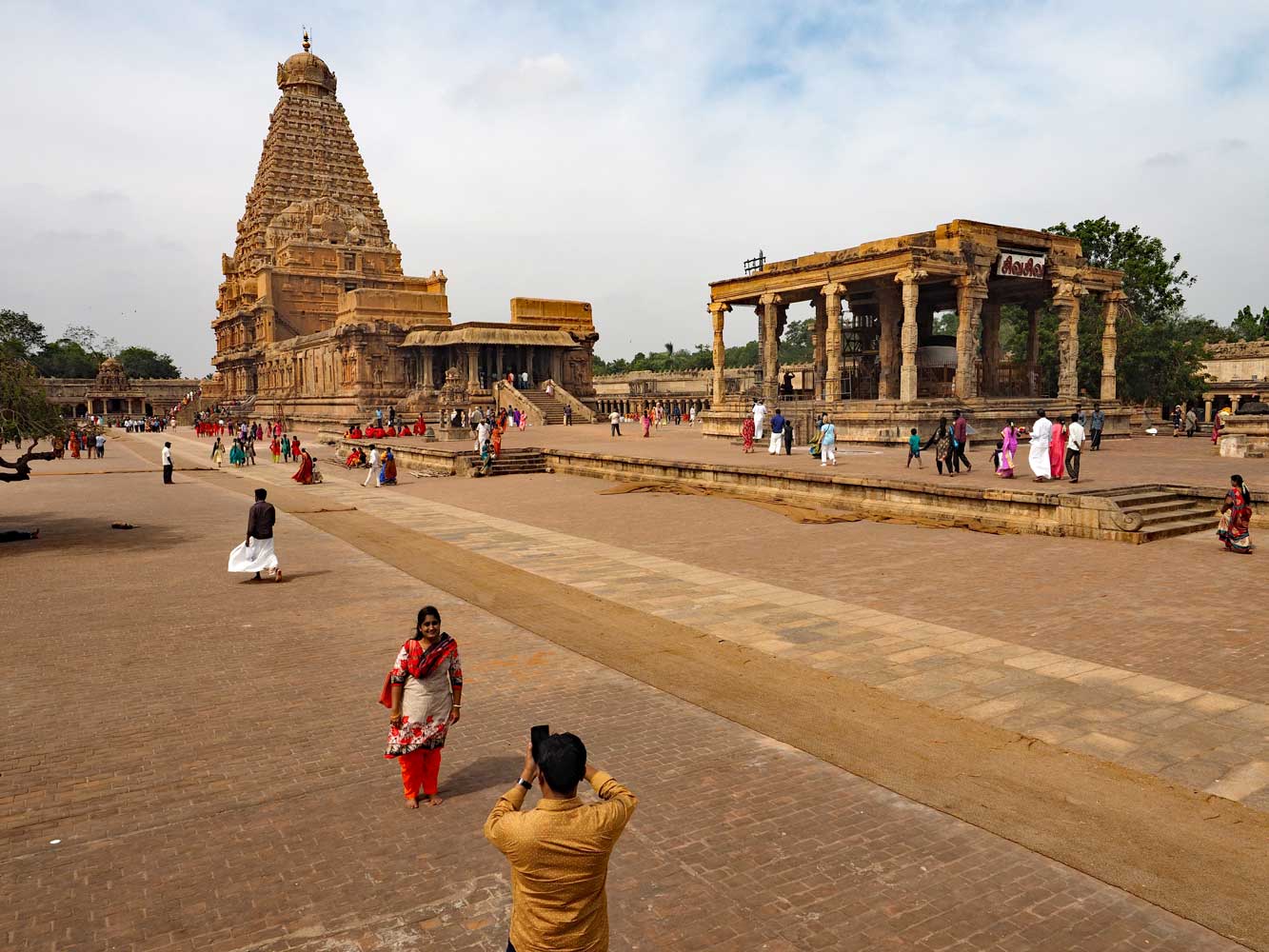
A giant Nandi
(Shiva’s vehicle) rests in a colonaded pavilion on the right, facing a long
columned assembly hall and finally the towering central shrine that protects a
four-meter Shiva lingam.
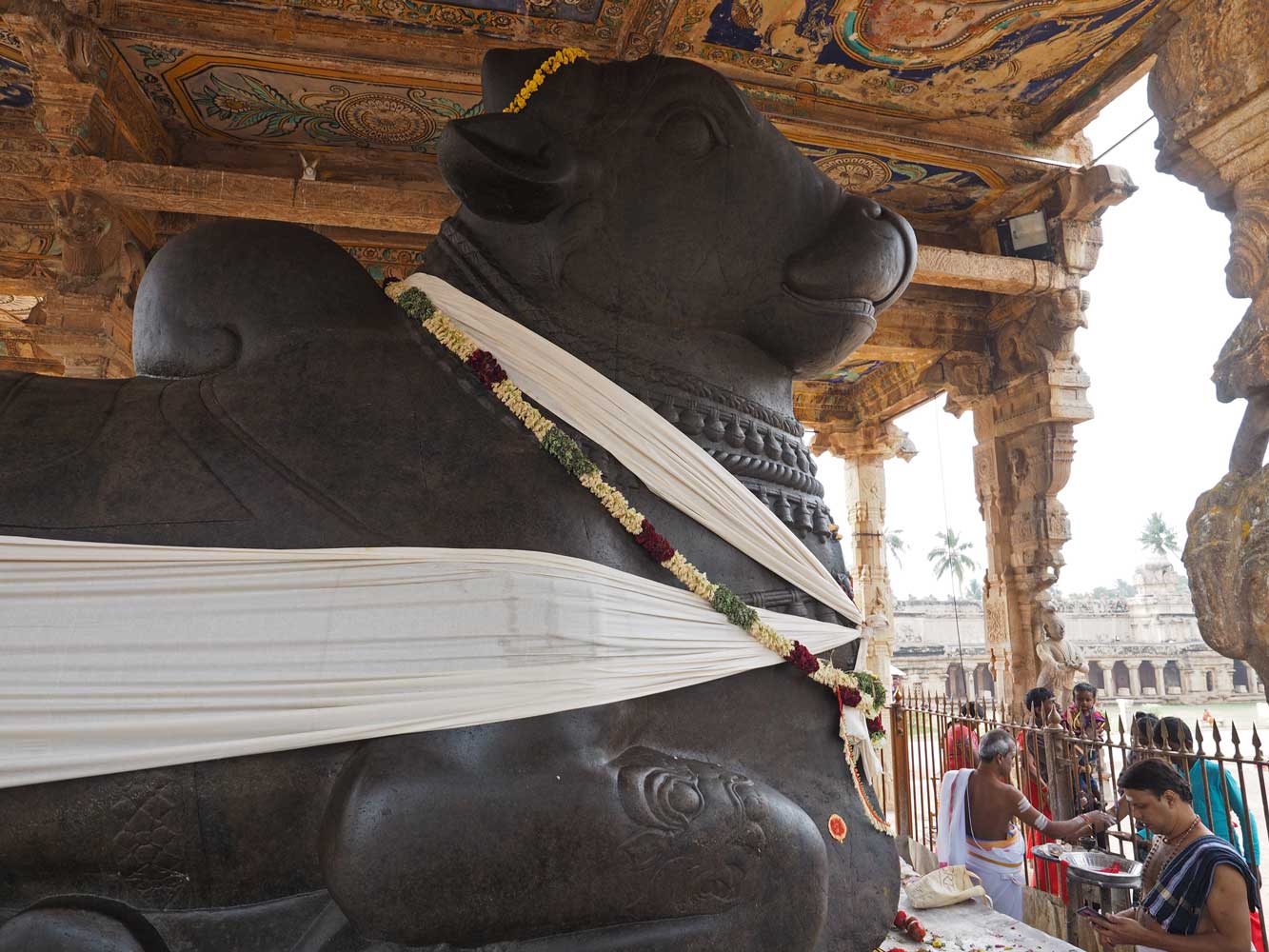
This 16th-century
Nandi, one of the largest in India, is six meters long and carved from a single
rock.
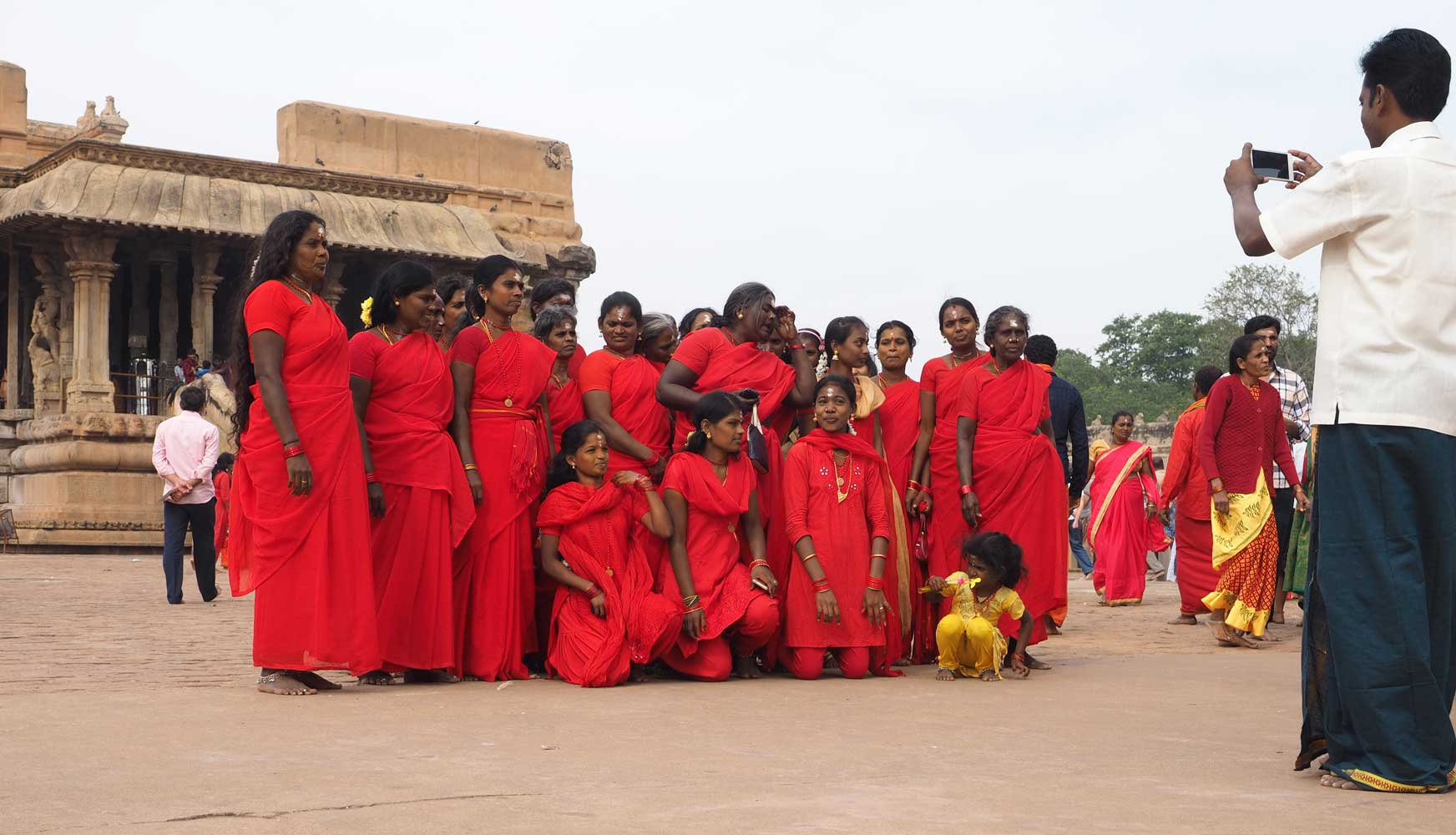
Pilgrims pose in front of the assembly hall.
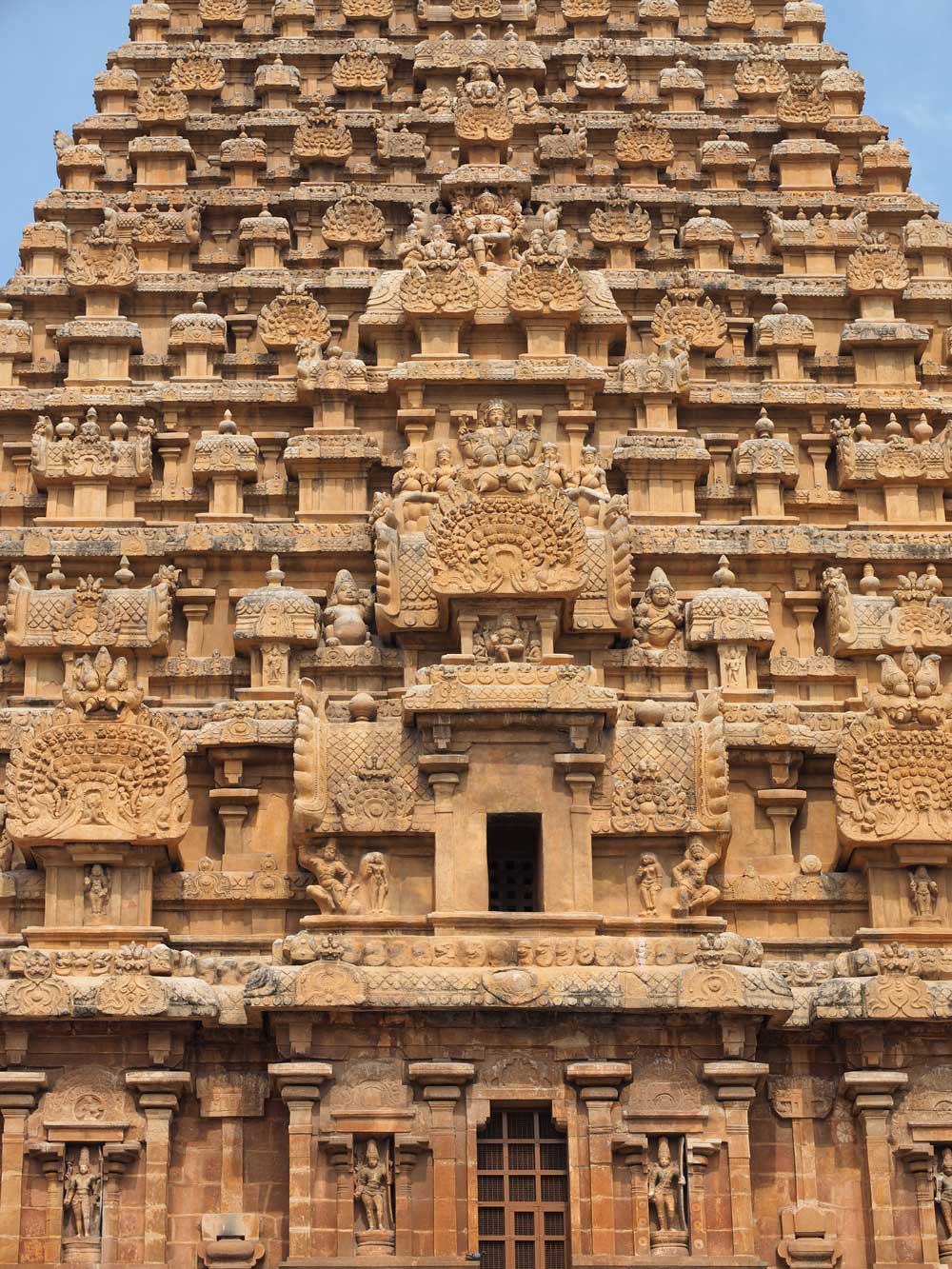
The
main Vimana (Shikhara) is a massive 66-meter (217-foot) tower with 13 tapering
squares.
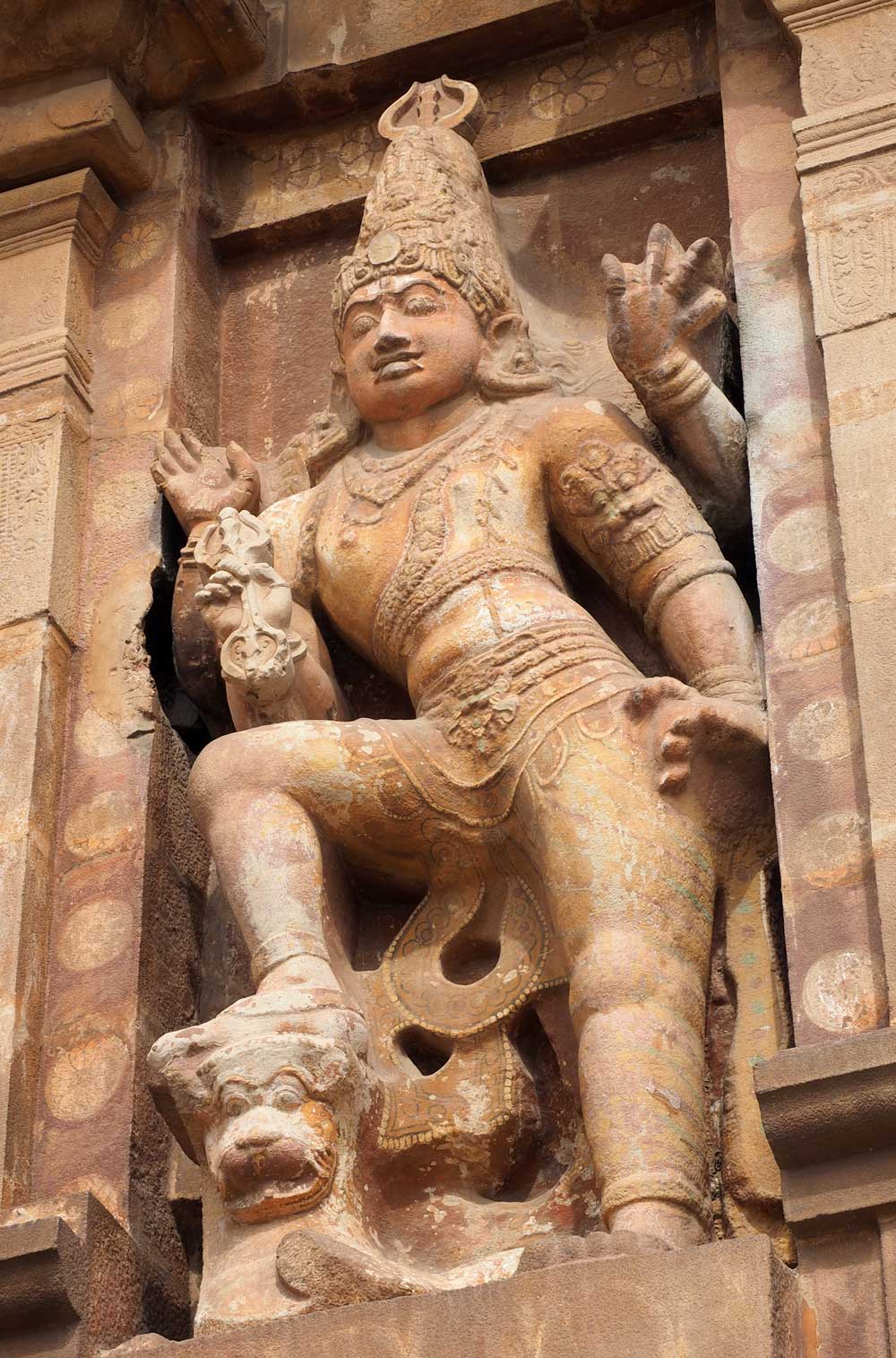
I
think this is a dvarapala, a gate-keeper and guard in service of the presiding
deity of the temple.
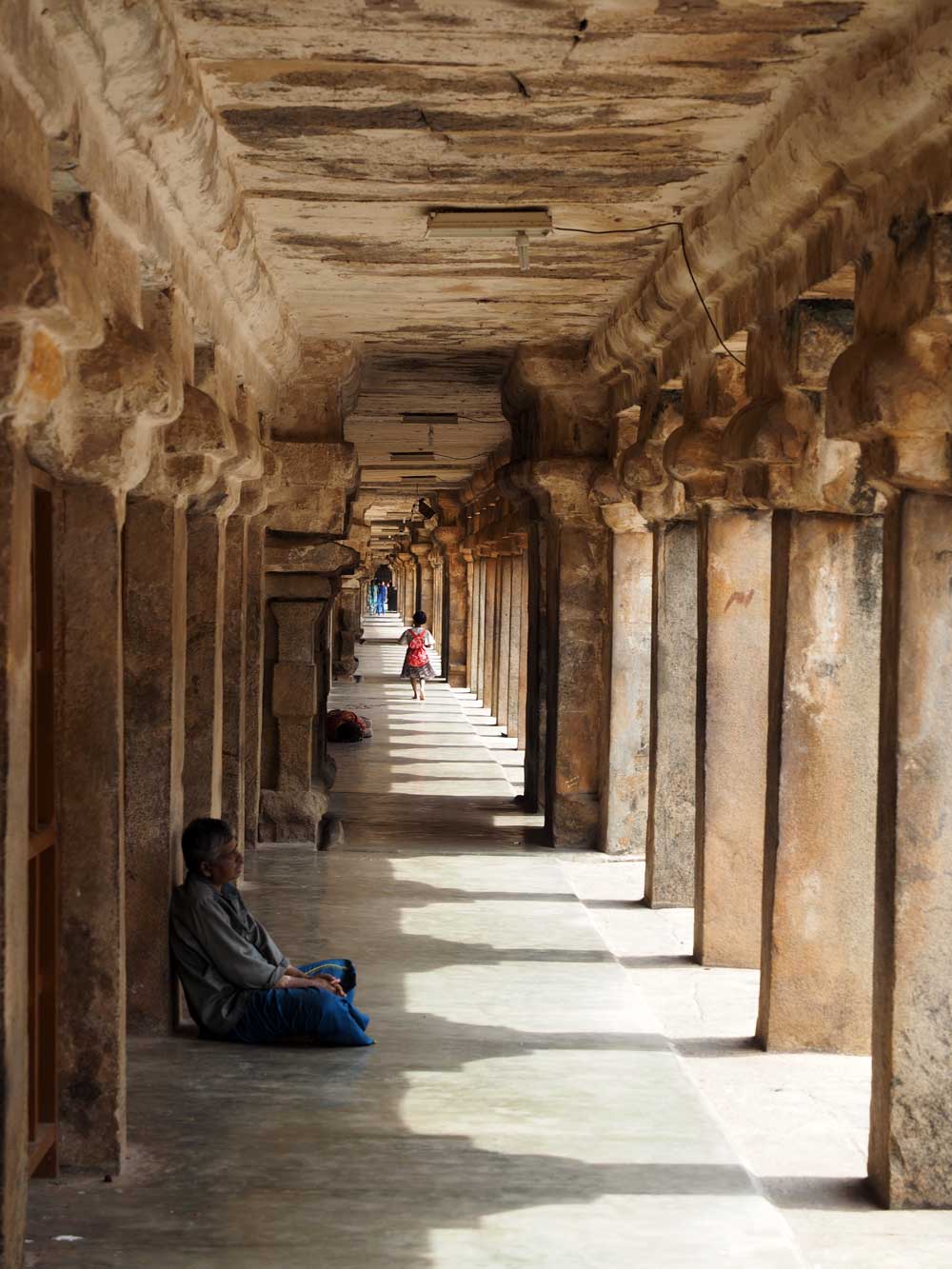
Cloisters wrap
around the temple grounds.
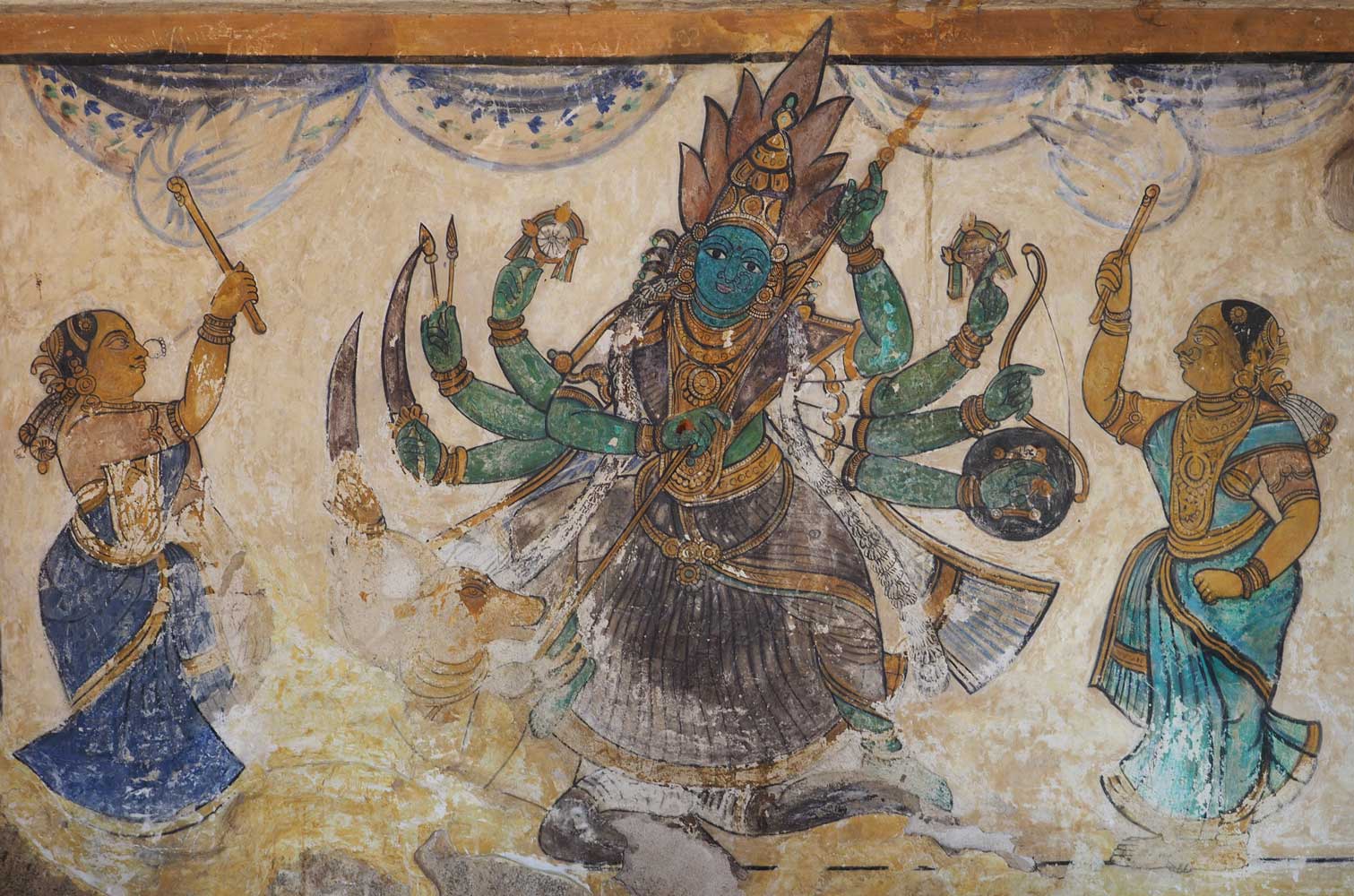
This might be the
powerful goddess Durga killing the buffalo demon.
Chola frescos, revealed
after removal of later murals, decorate the inside west and north walls.
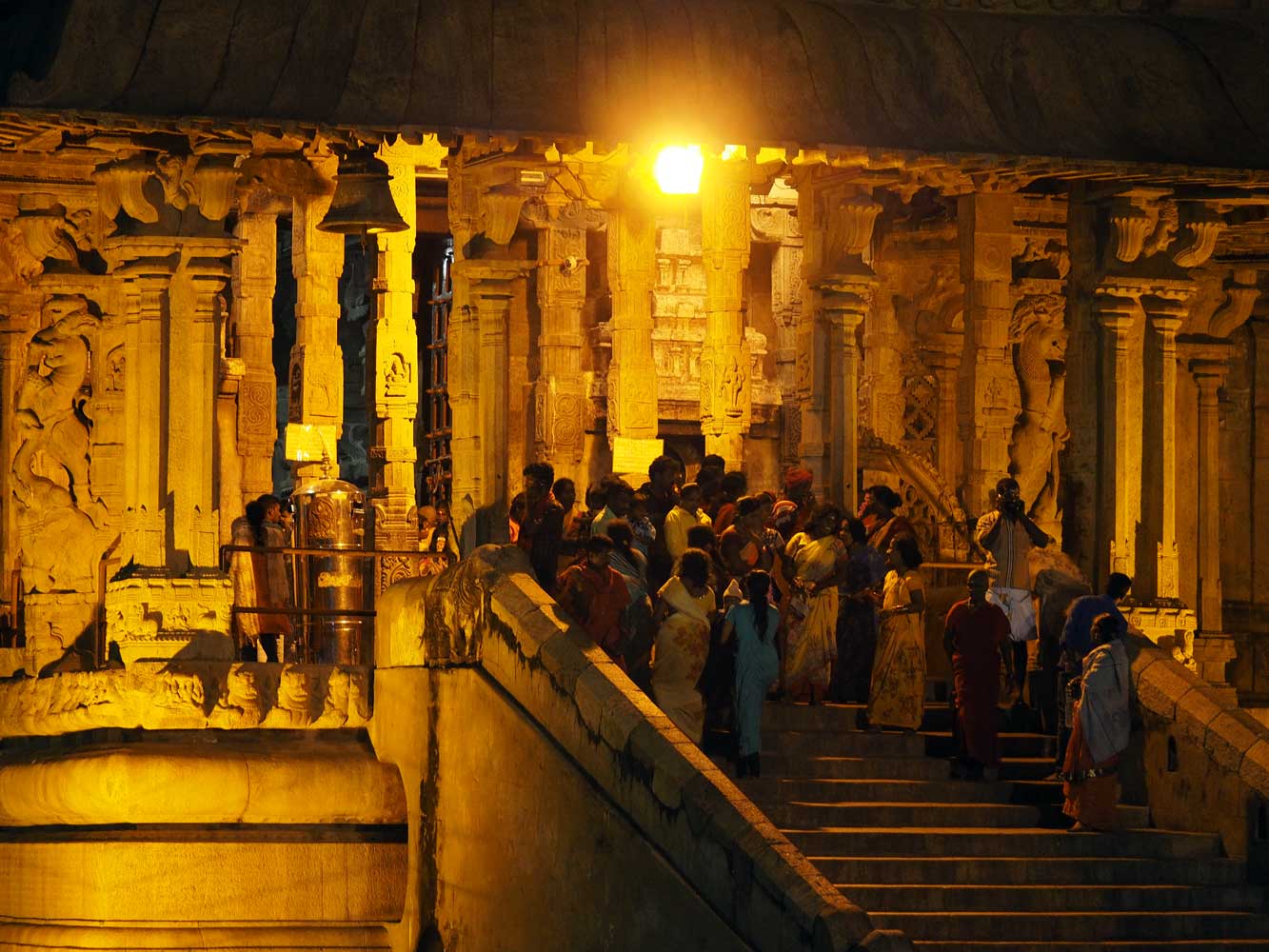
People gather on
steps of the assembly hall.
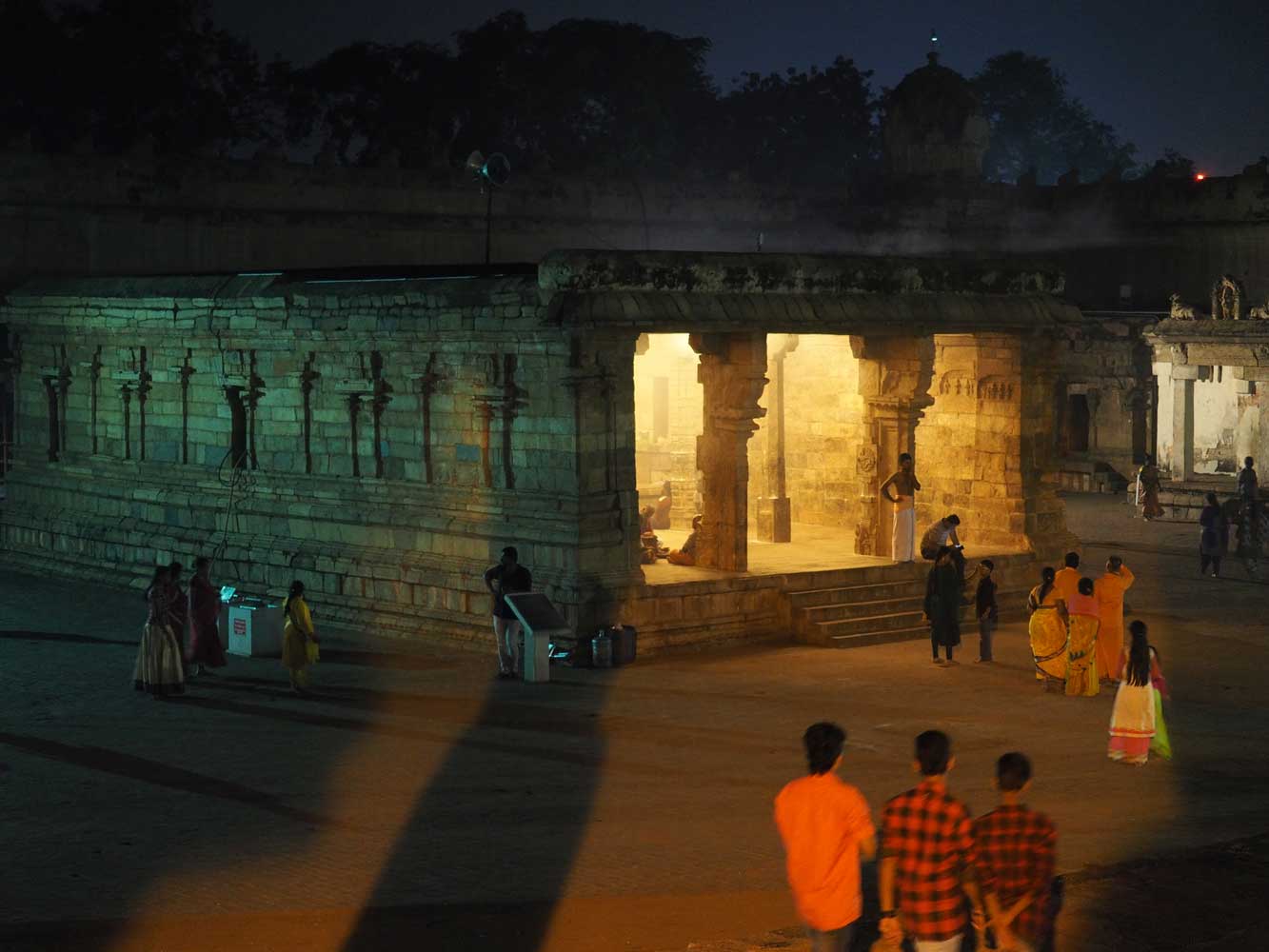
Nataraja Mandapam
for Shiva as Lord of Dance
The Royal Palace, built by later Nayaks and Maratha rulers, had much to see
in a maze of buildings. Collections displayed art and royal paraphernalia, most
notably in the Sarawasti Mahal Library Museum and the Art Gallery.
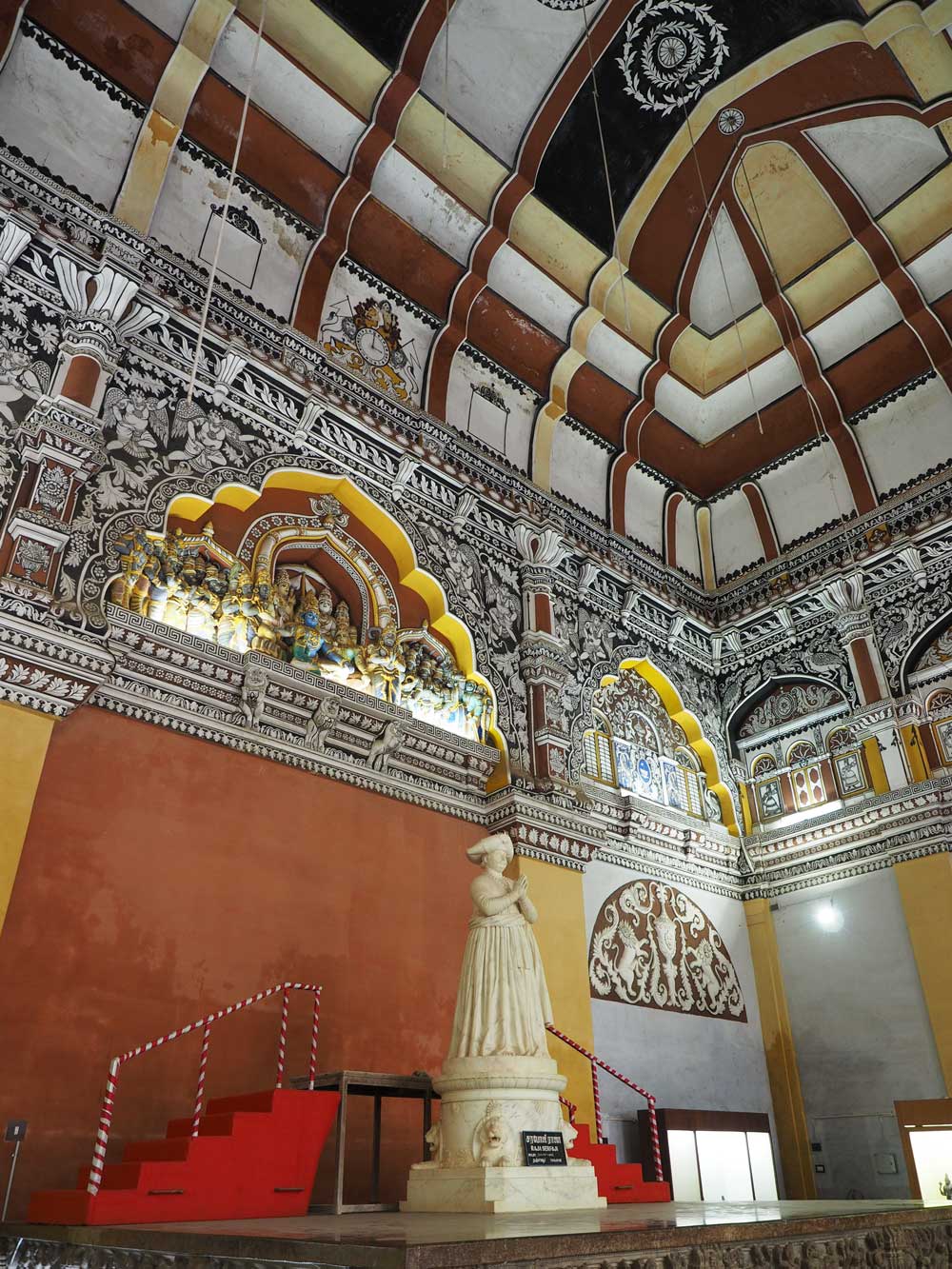
Maharaja Serfoji II
(1777–1832), a Maratha scholar-king, greatly expanded the palace library.
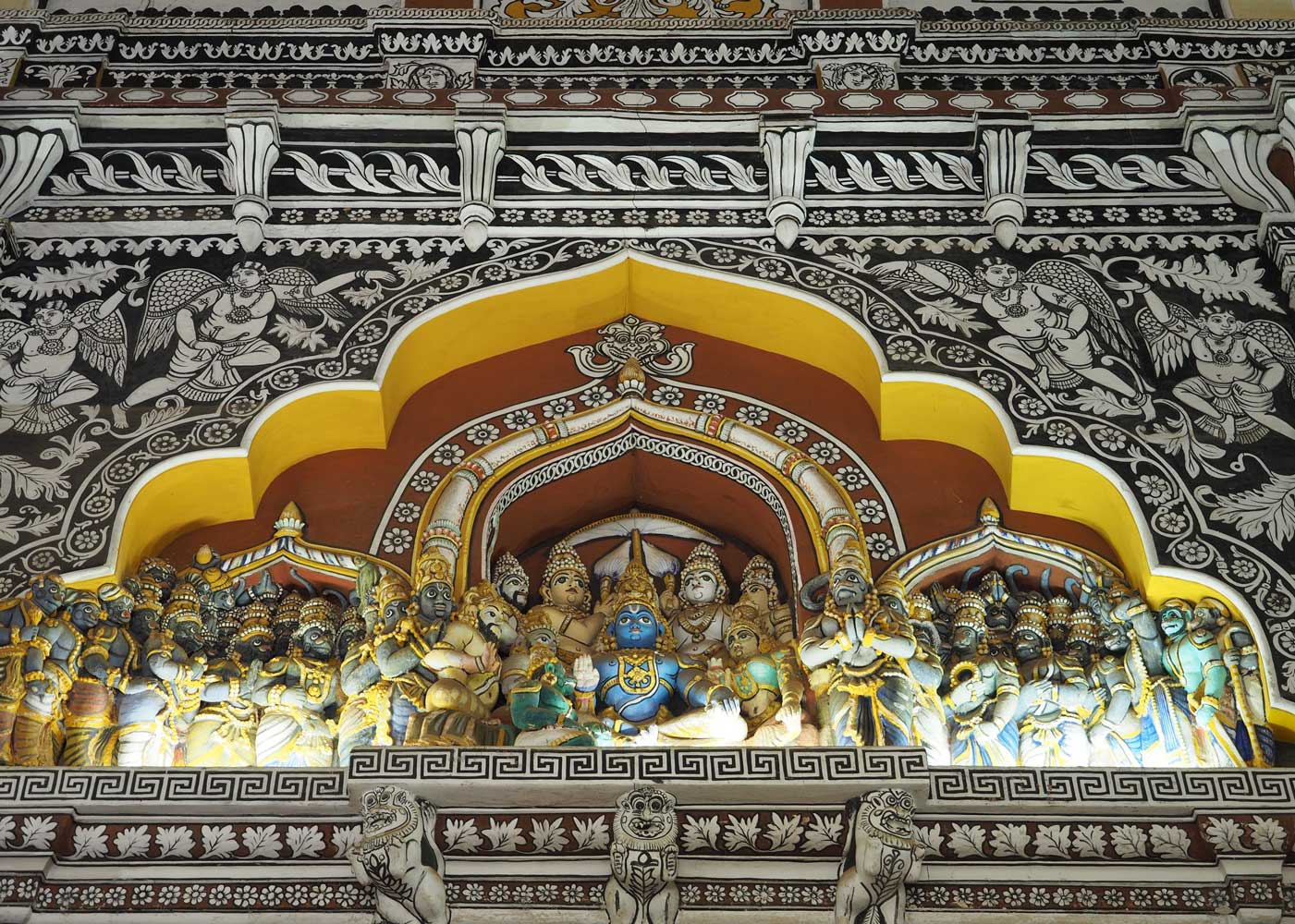
Detail in
Maharaja Serfoji Memorial Hall
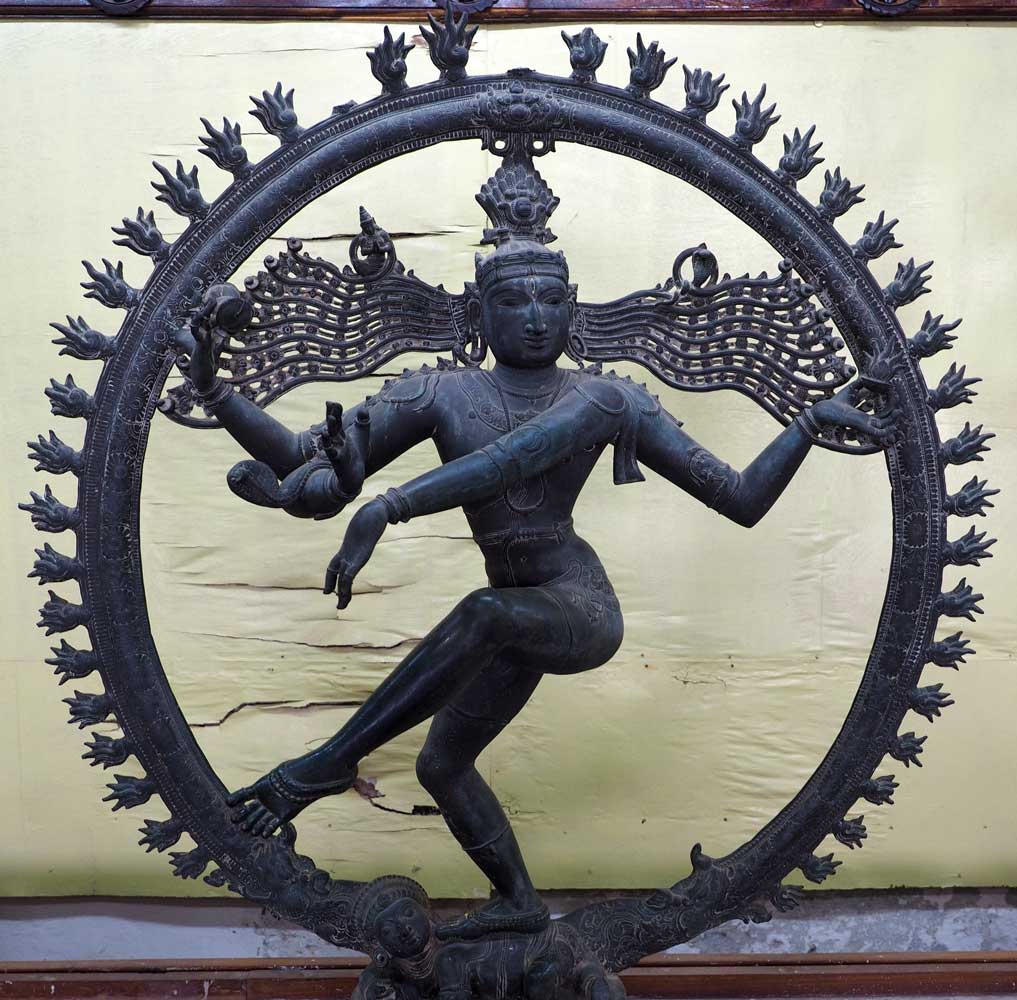
The Art Gallery has
stone sculptures and fine bronzes, such as this 12th-century Shiva Nataraja.
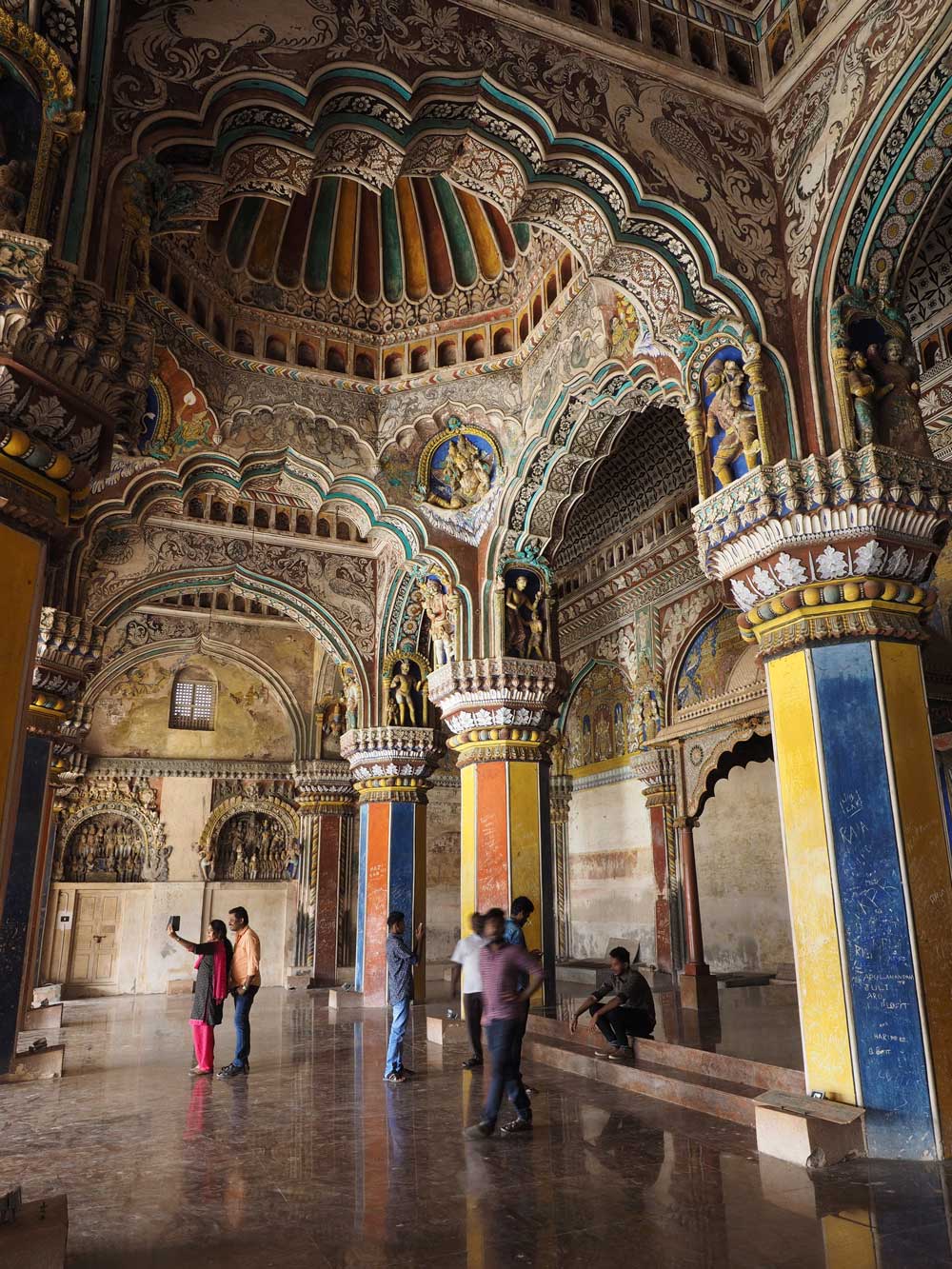
Mahratta
Dharbar Hall, where Maratha rulers gave audience, has incredibly fine detail
work.
A travel agent near the Kasi Inn got a three-tier air-conditioned seat to
Kumbakonam on the Chennai Express 16796, a far more comfortable than yesterday’s
standing and faster than in the cramped seat of a bus. But the agent seemed new
at this, took a long time to process the ticket, then got my name and sex wrong,
saying that wouldn’t matter. I knew better and asked the agent to fix these,
which raised the fare a bit and saved me from dealing with an annoyed train
conductor.
On to Tamil Nadu State: Kumbakonam
Temples
Back to Beginning of South India
Backpacking Dec. 2018-Jan. 2019













